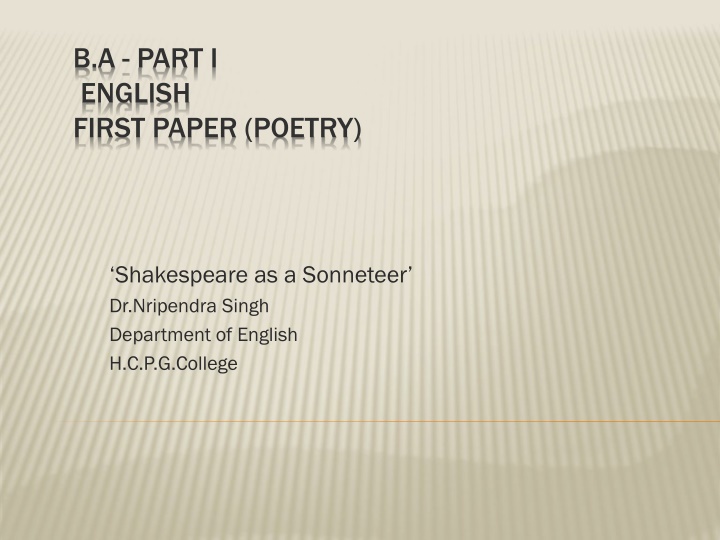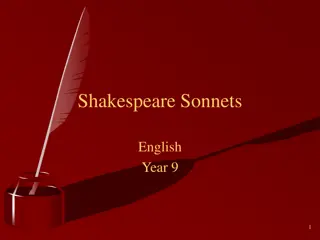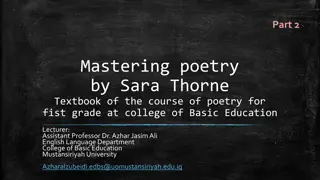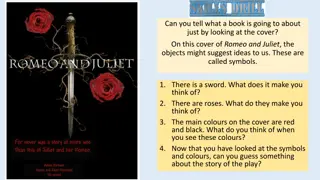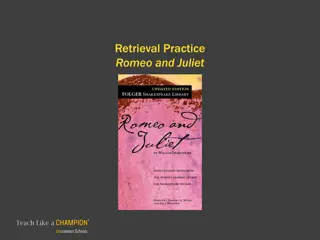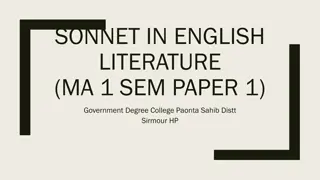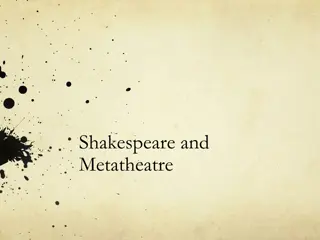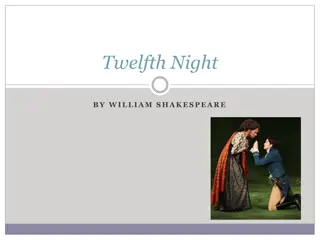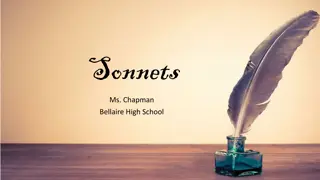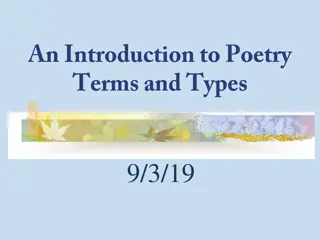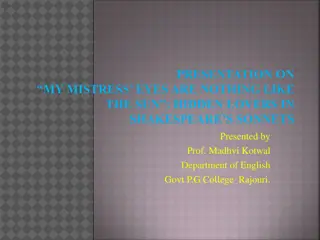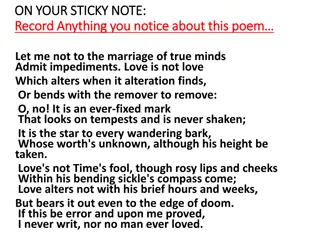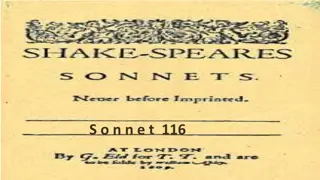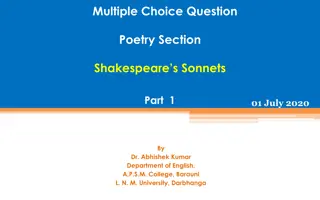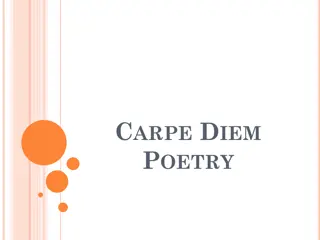Shakespeare's Sonnets: Treasures of Elizabethan Poetry
Shakespeare's sonnets, considered precious pearls of Elizabethan poetry, were written primarily in 1594 under the patronage of the Earl of Southampton. Divided into sections addressing a young man and a Dark Lady, they explore themes of love, beauty, and passion with a unique perspective. Despite being published without the author's consent, these sonnets have endured as a significant contribution to English literature.
Download Presentation

Please find below an Image/Link to download the presentation.
The content on the website is provided AS IS for your information and personal use only. It may not be sold, licensed, or shared on other websites without obtaining consent from the author.If you encounter any issues during the download, it is possible that the publisher has removed the file from their server.
You are allowed to download the files provided on this website for personal or commercial use, subject to the condition that they are used lawfully. All files are the property of their respective owners.
The content on the website is provided AS IS for your information and personal use only. It may not be sold, licensed, or shared on other websites without obtaining consent from the author.
E N D
Presentation Transcript
B.A - PART I ENGLISH FIRST PAPER (POETRY) Shakespeare as a Sonneteer Dr.Nripendra Singh Department of English H.C.P.G.College
Shakespeares sonnets are the most precious pearls of Elizabethan poetry. The majority of sonnets were written probably in 1594 under the patronage of Earl of Southampton. He preferred Spenserian than Italian form for his sonnets consisting of three decasyllabic quatrains, each rhyming alternately and a rhyming couplet to conclude. Thomas Thorpe printed a collection of 154 sonnets of Shakespeare in 1609. It was dedicated to Mr. W.H and to a Dark Lady .
Although the entirety of Shakespeare's sonnets were not formally published until 1609 (and even then, they were published without the author's knowledge). An allusion to their existence appeared eleven years earlier, in Francis Meres' Palladis Tamia (1598), in which Meres commented that Shakespeare's "sugred Sonnets" were circulating privately among the poet's friends. Approximately a year later, William Jaggard's miscellany, The Passionate Pilgrim, appeared, containing twenty poems. Five of which are known to be Shakespeare's two of the Dark Lady sonnets (Sonnets 138 and 144) and three poems included in the play Love's Labour's Lost. Apparently these five poems were printed in Jaggard's miscellany (a collection of writings on various subjects) without Shakespeare's authorization.
Although Shakespeare's sonnets can be divided into different sections numerous ways, the most apparent division involves Sonnets 1 126, in which the poet strikes up a relationship with a young man, and Sonnets 127 154, which are concerned with the poet's relationship with a woman, variously referred to as the Dark Lady. In the first large division, Sonnets 1 126, the poet addresses an alluring young man. In Sonnets 1 17, he tries to convince the handsome young man to marry and beget children so that the youth's incredible beauty will not die when the youth dies. Starting in Sonnet 18, when the youth appears to reject this argument for procreation, the poet glories in the young man's personality.
The second, shorter group of Sonnets 127154 involves the poet's relationship with the Dark Lady. Similar to his friendship with the young man, this relationship fluctuates between feelings of love, hate, jealousy, and contempt. Also similar is the poet's dependency on the woman's affections. The sonnets end with the poet admitting that he is a slave to his passion for the woman and can do nothing to curb his feelings. Shakespeare turns the traditional idea of a romantic sonnet on its head in this series, however, as his Dark Lady is not an alluring beauty and does not exhibit the perfection that lovers typically ascribe to their beloved
Shakespeare used English form of sonnet. There are fourteen lines in a Shakespearean sonnet. The first twelve lines are divided into three quatrains with four lines each. In the three quatrains the poet establishes a theme or problem and then resolves it in the final two lines, called the couplet. The rhyme scheme of the quatrains is abab cdcd efef. The couplet has the rhyme scheme gg. This sonnet structure is commonly called the English sonnet or the Shakespearean sonnet, to distinguish it from the Italian Petrarchan sonnet form which has two parts: a rhyming octave (abbaabba) and a rhyming sestet (cdcdcd). The Petrarchan sonnet style was extremely popular with Elizabethan sonneteers, much to Shakespeare's disdain (he mocks the conventional and excessive Petrarchan style in Sonnet 130.
